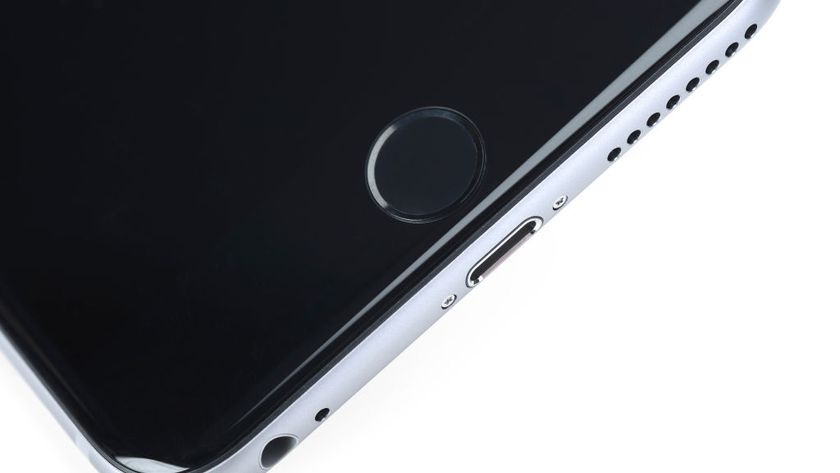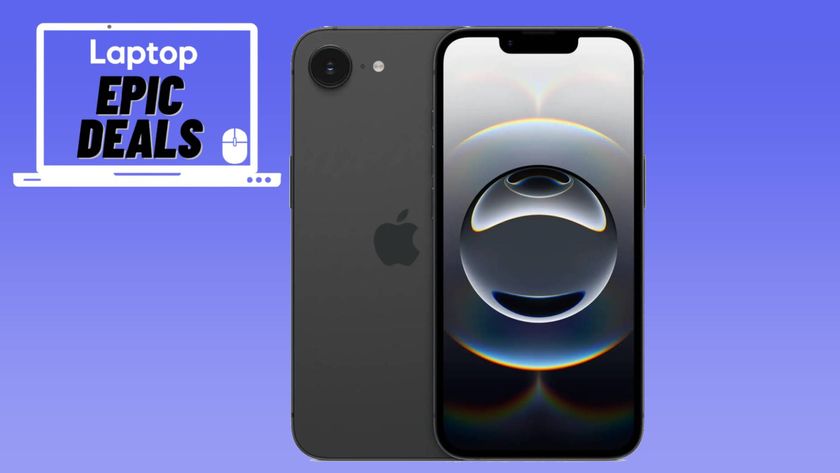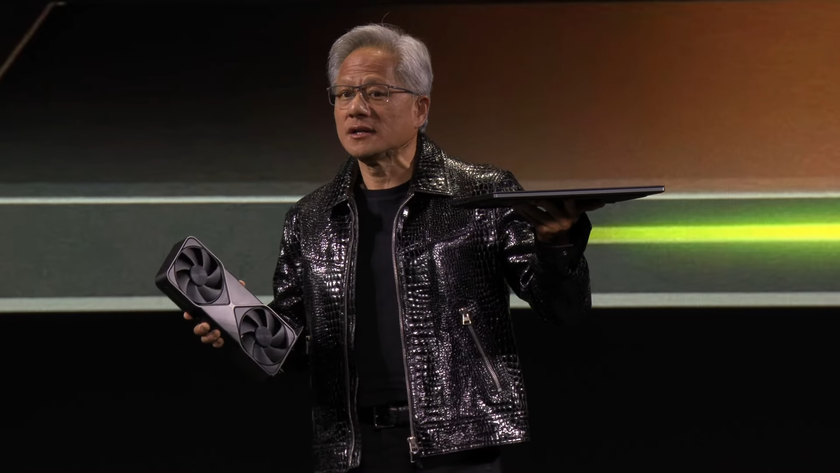iPhone 12 vs. iPhone 12 Pro: Which should you buy?
Is the iPhone 12 Pro worth the extra $170?
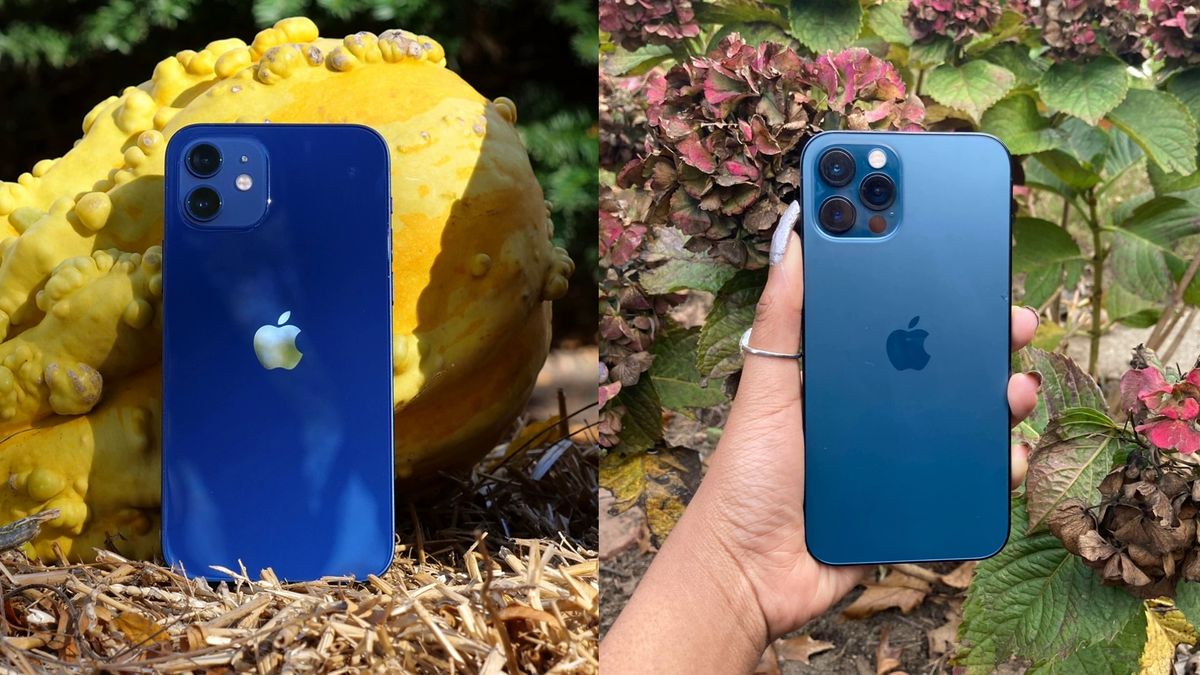
The iPhone 12 vs. iPhone 12 Pro is the smartphone face-off you’ll want to spectate if you're unsure whether the Pro model is worth the extra $170. The standard iPhone 12 and the iPhone 12 Pro share many similarities, including an 6.1-inch, Super Retina XDR OLED display, Night Mode expansion to wide and ultra-wide cameras, and the A14 bionic chip (the world’s fastest smartphone processor).
So what, exactly, are the differences between the iPhone 12 and the iPhone 12 Pro?
- iPhone 12 review
- iPhone 12 Pro review
- iPhone 12 drop test — the earth-shattering results will shock you!
The most conspicuous dissimilarities between the iPhone 12 and the iPhone 12 Pro are found within their cameras. Both smartphones have 12MP front-facing, wide and ultra-wide cameras, but the iPhone 12 Pro adds a telephoto lens and LiDAR scanner. We’ll dive into how these additional features enhance your smartphone experience.
After testing the iPhone 12 and iPhone 12 Pro in our labs, we’ve also noticed some differences between the two devices when it comes to screen brightness, battery life, overall performance and more. Stick around to see how these high-end smartphone contenders fared in our face-off ring.
| Row 0 - Cell 0 | iPhone 12 | iPhone 12 Pro |
| Display (refresh rate) | 60Hz, 6.1-inch, OLED, Super Retina XDR, 2532 x 1170 | 60Hz, 6.1-inch, OLED, Super Retina XDR, 2532 x 1170 |
| CPU | Apple A14 Bionic | Apple A14 Bionic |
| RAM | 4GB | 6GB |
| Storage | Starts at 64GB | Starts at 128GB |
| MicroSD slot | No | No |
| Rear cameras | Two 12MP lenses (wide, ultra wide) | three 12MP lenses (wide ultra-wide, telephoto) + LiDAR |
| Front camera | 12MP, f/2.2 aperture, TrueDepth | 12MP, f/2.2 aperture, TrueDepth |
| Battery size | 2,815 mAh | 2,815 mAh |
| Water resistance | Yes, IP68 | Yes, IP68 |
| Colors | Blue, black, white, red and green | Pacific blue, silver, graphite and gold |
| Dimensions | 5.8 x 2.8 x 0.3 inches | 5.8 x 2.8 x 0.3 inches |
| Weight | 5.8 ounces | 6.7 ounces |
iPhone 12 vs. iPhone 12 Pro: price and value
The iPhone 12 starts at $829 for a 64GB model with 4GB of RAM and goes up to $879 for the 128GB version. The most expensive configuration, the version we reviewed, costs $979 with 256GB of storage.
The iPhone 12 Pro starts at $999, but comes with 128GB of storage and 6GB of RAM. Upgrading to 256GB raises the price to $1,099. The 512GB model we tested for our review costs $1,299.
With the iPhone 12 offering sub-$1,000 prices across all storage stratas, the standard model is kinder to your pockets, so the lower-priced iPhone 12 is the champion of this round.
Stay in the know with Laptop Mag
Get our in-depth reviews, helpful tips, great deals, and the biggest news stories delivered to your inbox.
Winner: iPhone 12
iPhone 12 vs. iPhone 12 Pro: design
Would your peers be able to tell whether you own the iPhone 12 or the pricier iPhone 12 Pro? The answer is yes, especially if they can get a good glimpse of the back (where the cameras are located).
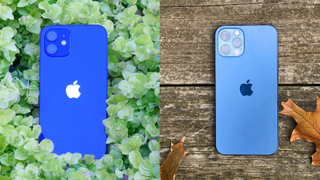
The displays on the standard and Pro model are identical — both sport slim bezels and 6.1-inch, OLED panels. They both feature an unsightly notch that houses the front-facing, 12MP selfie camera, thwarting the display from maintaining a high screen-to-body ratio.
You’ll find the silencer and volume buttons on the left edge of both smartphones while the side button, used to awaken the device and activate Siri, can be found on the right edge. On the bottom edge is a set of Dolby Atmos-supported speakers and mics, as well as a lightning port for charging.
The two iPhone 12 smartphones have a flat-edge design reminiscent of the boxy iPhone 5.

The units we tested are draped in an eye-catching blue hue that took our breath away. The standard iPhone 12 offers a shade of blue that’s closer to Lapis Lazuli while the Pro model radiates a stunning cerulean hue. Aside from blue, the iPhone 12 comes in black, white, red and green; the Pro comes in silver, graphite and gold.
The back of the phone is where features start to vary. As mentioned, the iPhone 12 Pro has two additional features for enhanced camera performance: a telephoto lens and a LiDAR scanner. As such, the iPhone 12’s rear-lens system has a dual-camera array while the iPhone 12 Pro has a triple-camera array with a LiDAR sensor.
The iPhone 12 siblings are also made of different materials. The standard iPhone 12 sports an aerospace-grade aluminum enclosure while the iPhone 12 Pro fashions a surgical-grade stainless steel edge. The base model has a fingerprint-attracting, glossy coating on the back while the Pro has a fingerprint-averse matte finish. The opposite is true for the edges — the iPhone 12 has a anti-fingerprint, matte coating and the iPhone 12 Pro has a glossy, fingerprint-attracting finish.
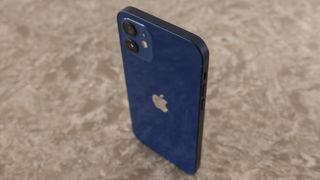
The iPhone 12 and iPhone 12 Pro have the same dimensions (5.8 x 2.8 x 0.3 inches), but the iPhone 12, weighing 5.8 ounces, is a tinge lighter than the iPhone 12 Pro (6.7 ounces). This could be why the iPhone 12 fared better than the iPhone 12 Pro during a drop test. Because the iPhone 12 Pro’s chassis is slightly more fragile, I’ll have to give the iPhone 12 the win.
Winner: iPhone 12
iPhone 12 vs. iPhone 12 Pro: display
The iPhone 12 siblings are adorned with a 6.1-inch, OLED, Super Retina XDR, 2532-by-1170-pixel display.
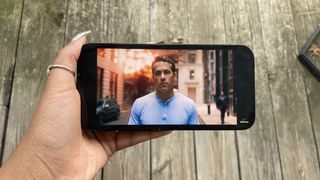
Both phones are equipped with Ceramic Shield displays — glass panels that are infused with crystalline structures to strengthen the integrity of the screen. According to Apple, the iPhone 12 line has the world’s most durable display. The Ceramic Shield displays are framed with super-slim bezels, but both smartphones feature intrusive notches that detract from the displays’ screen-to-body ratio.
To test the displays, we watched The Mandalorian Season 2 trailer on the iPhone 12 and the Free Guy trailer on the iPhone 12 Pro. We were impressed with the crisp, high-definition details as we gawked at Baby Yoda’s wispy hair on the iPhone 12 and ogled Ryan Reynolds as he kicked ass in a colorful video-game world on the iPhone 12 Pro.
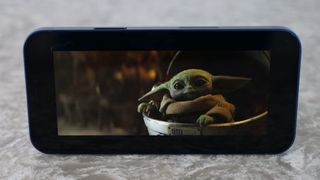
However, the phones’ 60Hz screens pale in comparison to the displays on high-end Android flagships. The displays on the iPhone 12 will be a step up for you if you’re upgrading from the iPhone 11, but if you’re making a switch from a top-of-the-line Android smartphone like the Samsung Galaxy Note 20 Ultra, you’ll certainly miss its vibrant, 6.9-inch AMOLED display with a silky smooth 120Hz refresh rate.
According to our colorimeter, the iPhone 12 Pro covers 81.9% of the DCI-P3 color gamut, giving it a negligible edge over the iPhone 12 (81.1%). The iPhone 12 Pro’s display is also more radiant than the 570-nit iPhone 12, emanating 743 nits of brightness.
The iPhone 12 Pro, offering a Delta-E score of 0.28 (the closer to zero, the better), is marginally more color accurate than the iPhone 12 (0.29).
Winner: iPhone 12 Pro
iPhone 12 vs. iPhone 12 Pro: performance
The iPhone 12 and the iPhone 12 Pro are equipped with the A14 bionic chip, which is the fastest smartphone SoC in the world. The iPhone 12 has 4GB of RAM while the iPhone 12 Pro is packed with 6GB of RAM. When we flooded both phones with a barrage of apps to test their multitasking capabilities, the iPhone 12 and iPhone 12 Pro stood strong and said, “Is that all you’ve got?” If you have a bad habit of running countless apps simultaneously, both phones can handle your onslaught of heavy productivity without slowing down.
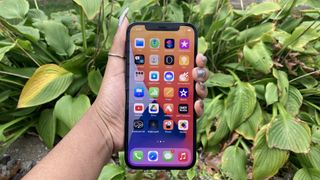
On the Geekbench 5.0 overall performance test, the iPhone 12 shocked us when it achieved a jaw-dropping score of 3,859, which outperforms the pricier iPhone 12 Pro (3,669). The iPhone 12 is the best-performing smartphone we’ve ever tested.
On the Jetstream 2.0 benchmark, a web-browser test designed to measure JavaScript performance, the iPhone 12 achieved a score of 169.8, outpacing the iPhone 12 Pro by a hair (169.2).
In our Adobe Premiere Rush video editing test, the iPhone 12 took 26.5 seconds to finish rendering a set of tasks, which is marginally faster than the iPhone 12 Pro (27 seconds).
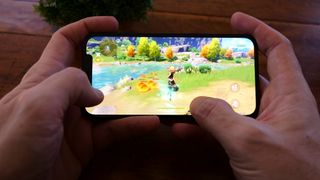
On the 3DMark Wild Life graphics performance benchmark, the iPhone 12 served up a score of 6,562 (39 frames per second) while the iPhone 12 Pro edged out the base model by a nose with a score of 6,567 (also 39 frames per second).
On the GFXBench 5.0 benchmark, which tests graphics and gaming, the iPhone 12 managed 2,186 frames (34 frames per second) on Aztec Ruins Metal in High Tier Off-Screen. The iPhone 12 Pro received the same score.
Although the iPhone 12 Pro outperformed the iPhone 12 in most tests, it wasn’t by much, and its lower-priced sibling was on its heels throughout our benchmarks.
Winner: iPhone 12 Pro
iPhone 12 vs. iPhone 12 Pro: battery life and charging
You may be wondering which phone lasts longer on the charge. According to results from the Laptop Mag battery test (continuous surfing over a cellular network at 150 nits of brightness), the iPhone 12 takes the crown with 8 hours and 24 minutes. The iPhone 12 Pro, lasting 8 hours and 15 minutes, ran out of juice nine minutes before the iPhone 12, which isn’t a significant margin.
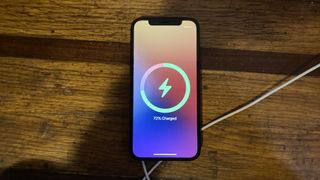
Neither the iPhone 12 nor the iPhone 12 Pro come with power bricks in their boxes (boo!), so you’ll need a USB-C power adapter to use the USB-C-to-lightning charging cable, which ships with the iPhone 12 line. You’ll need the same power adapter for the MagSafe wireless charging pad (sold separately); it, too, does not come with a power brick.
We used a 20W power brick and the MagSafe charging pad to power up the iPhone 12 smartphones. The base model charged to 16% after 15 minutes and 31% after 30 minutes. The iPhone 12 Pro charged to 12% after 15 minutes and 29% after 30 minutes.
Winner: iPhone 12
iPhone 12 vs. iPhone 12 Pro: cameras
The most salient differences between the iPhone 12 and the iPhone 12 Pro lies within their camera setups. The iPhone 12 sports three 12MP cameras in total: a f/2.2 aperture, TrueDepth, front-facing camera and a rear dual-camera array with an f/1.6 aperture, primary wide-angle lens and an f/2.4 aperture, ultra-wide, 120-degree lens.

iPhone 12 vs. iPhone 12 Pro: camera samples
Wide lens on the iPhone 12

Wide lens on the iPhone 12 Pro

Ultrawide lens on the iPhone 12

Ultrawide lens on the iPhone 12 Pro

Selfie on the iPhone 12

Selfie on the iPhone 12 Pro
The iPhone 12 Pro has the same wide, ultra-wide and front-facing cameras as the iPhone 12, but adds a telephoto lens (52mm focal length) for 2x optical zoom and a LiDAR sensor for better low-light performance and advanced augmented-reality (AR). If you want to zoom on the iPhone 12, you’ll have to use digital zoom (as opposed to optical zoom), which relies on the camera app to zoom in beyond the capabilities of the equipped lenses.
How is a telephoto lens useful?
When our staff writer, Sean Riley, experimented with the digital zoom on the telephoto-free iPhone 12, which offers a range of 0.5x to 5x, the quality of the images dropped as he zoomed past 3x; at 5x, the images looked “muddled,” as he put it. The iPhone 12 Pro, on the other hand, offers 2x optical zoom (via the telephoto lens) and 10x digital zoom.
In my personal experience with the Pro’s telephoto lens, images remained beautifully sharp and defined within the 2x optical-zoom scope.


Beyond 2x, you’ll need to use the camera app to zoom in, and similar to Riley, I found that the image quality began to crumble after magnifying past 3x. With its optical 2x range, the iPhone 12 Pro’s telephoto lens provides sharper, magnified photos compared to the standard iPhone 12’s digital 2x scope.
How is LiDAR useful?
LiDAR, which stands for Light Detection and Ranging, shoots lasers to determine depth information. As a result, the LiDAR sensor on the iPhone 12 Pro enhances Night Mode performance, dramatically improving autofocus in low-light environments.
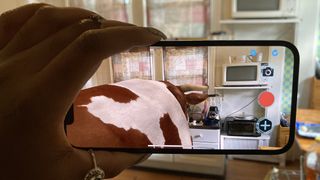
LiDAR is also beneficial for out-of-this-world AR experiences. From a dinosaur to a demon, you can summon a wide-ranging variety of AR characters into the real world. You can also play some immersive games, such as basketball, pet simulators and artsy apps.

For a more in-depth look at all the eye-catching, addictive experiences that LiDAR can offer on the iPhone 12 Pro, check out my rundown of some top AR apps.
Night Mode
Thanks to the iPhone 12 Pro’s LiDAR scanner, Night Mode performance is improved. Take a look at the differences between Night Mode shots on the iPhone 12 and iPhone 12 Pro. Night Mode shots on the iPhone 12 Pro are more true-to-life. The images are sharper, more color accurate and brighter when compared to Night Mode shots from the iPhone 12.
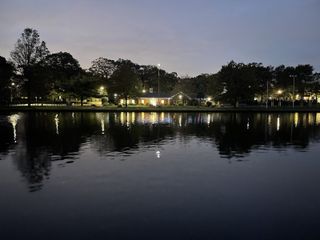

As for video recording, the iPhone 12 can record Dolby Vision HDR at up to 30 fps while the iPhone 12 Pro’s frames double to 60 fps. This means both smartphones offer life-like visuals thanks to Dolby Vision HDR, but the iPhone 12 Pro’s videos will be zippier and smoother due to its higher frame-rate capabilities.
Winner: iPhone 12 Pro
Overall winner: iPhone 12 Pro
Nailing down the winner of this face-off was a challenge. On one hand, the iPhone 12 outperformed its pricier counterpart on most tests. The gains were miniscule, but it's enough to make you question whether the iPhone 12 Pro is overvalued.
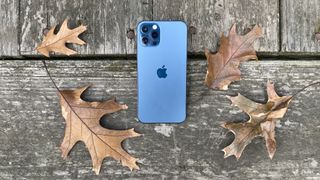
However, the iPhone 12 Pro’s rear triple-camera array is indubitably superior to the iPhone 12’s rear dual-camera system, which lacks a telephoto lens and a LiDAR scanner. Photos taken at night with the iPhone 12 Pro will trump the iPhone 12 as will zoomed-in photos. You’ll also find yourself addicted to AR gaming as you hover beyond the confines of the Pro’s 6.1-inch screen. However, I understand that some people may not care about enhanced-zoom capabilities, better Night Mode and badass AR experiences — at least, not enough to spend an extra $175.
On the battery test, the iPhone 12 lasted nine minutes longer than the Pro model, which may be significant to some, but in my opinion, it’s not a noteworthy difference. Quite frankly, the measly eight-hour runtime of both smartphones is mediocre compared to similarly priced rivals on the market. The Samsung Galaxy Note 20 Ultra lasted 10 hours and 27 minutes on a charge while the Samsung Galaxy S20 Ultra offers almost 12 hours of battery life. Hell, even the iPhone 11 Pro lasted at least 10 hours.
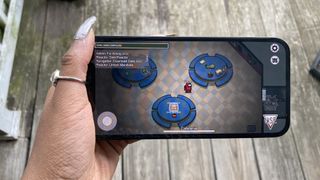
If you’re a stickler for battery life, I’d wait for our review of the iPhone 12 Pro Max — the top-tier iPhone 12 smartphone that starts at $1,099. The Pro Max may last longer on a charge due to its 3,687 mAh battery. The iPhone 12 and iPhone 12 Pro, conversely, have smaller 2,815 mAh batteries. The iPhone 12 Pro’s LiDAR scanner and a telephoto lens may not sway you to pay extra, but longer battery life — a highly desirable perk among smartphone users — might be more persuasive. The iPhone 12 Pro Max will come out on Nov. 13.
If you’re dead set on purchasing either the iPhone 12 and the iPhone 12 Pro, I’d opt for the Pro model if you’re seeking a better camera experience. If you frequent low-lit settings such as bars, restaurants and clubs, the iPhone 12 Pro’s LiDAR scanner will spice up your Night Mode photos and serve up better-illuminated memories. If you want the best performer of the two, the iPhone 12 is the best option.
Kimberly Gedeon, holding a Master's degree in International Journalism, launched her career as a journalist for MadameNoire's business beat in 2013. She loved translating stuffy stories about the economy, personal finance and investing into digestible, easy-to-understand, entertaining stories for young women of color. During her time on the business beat, she discovered her passion for tech as she dove into articles about tech entrepreneurship, the Consumer Electronics Show (CES) and the latest tablets. After eight years of freelancing, dabbling in a myriad of beats, she's finally found a home at Laptop Mag that accepts her as the crypto-addicted, virtual reality-loving, investing-focused, tech-fascinated nerd she is. Woot!
Most Popular



